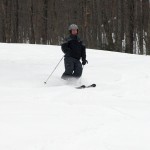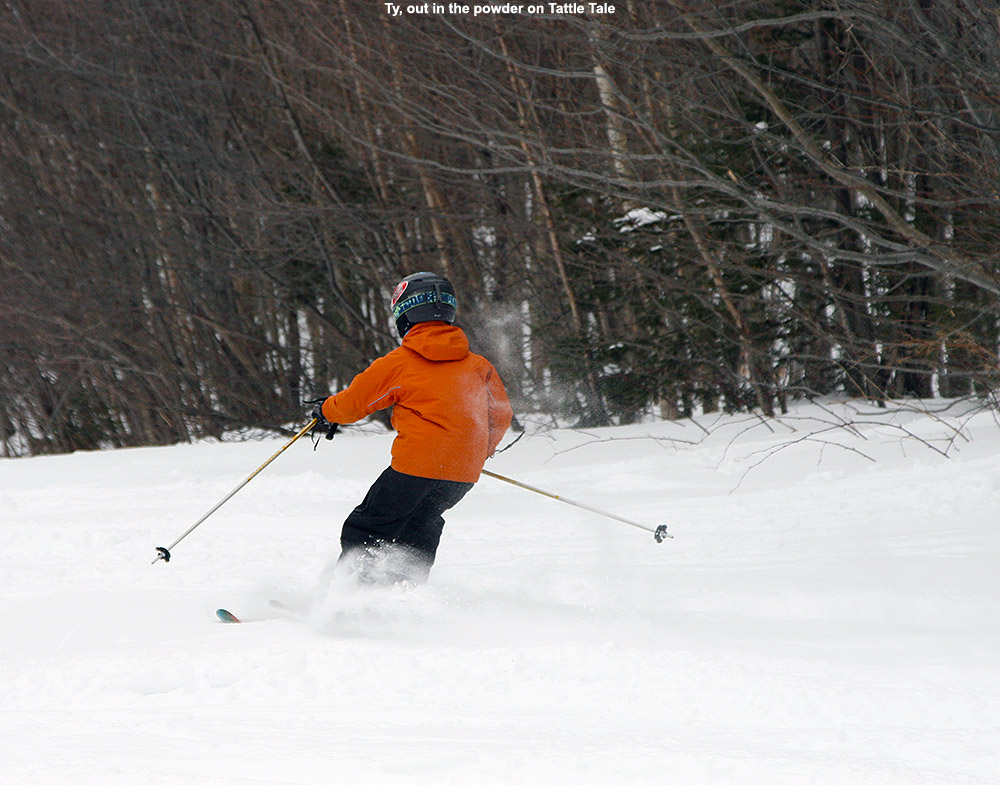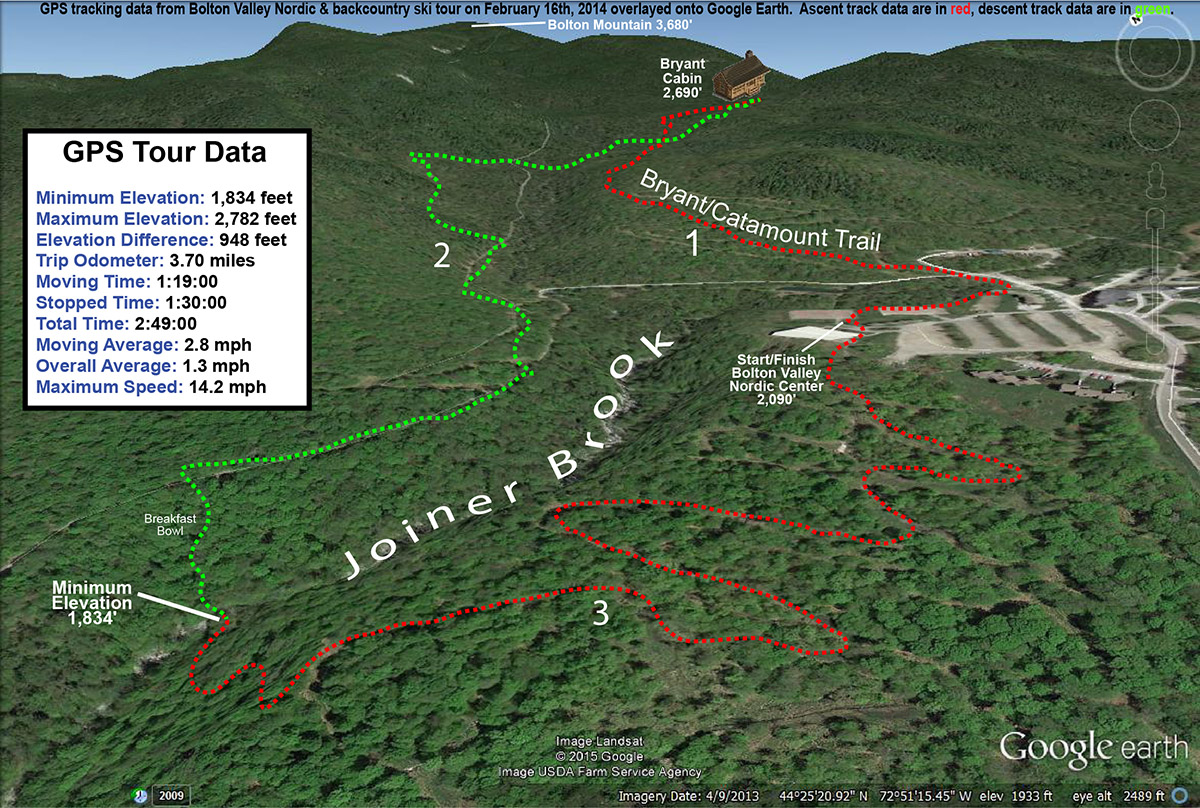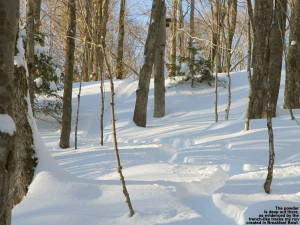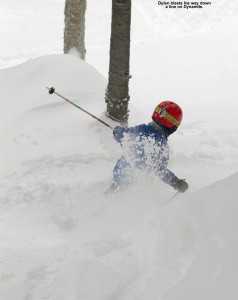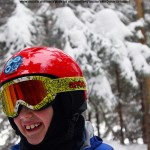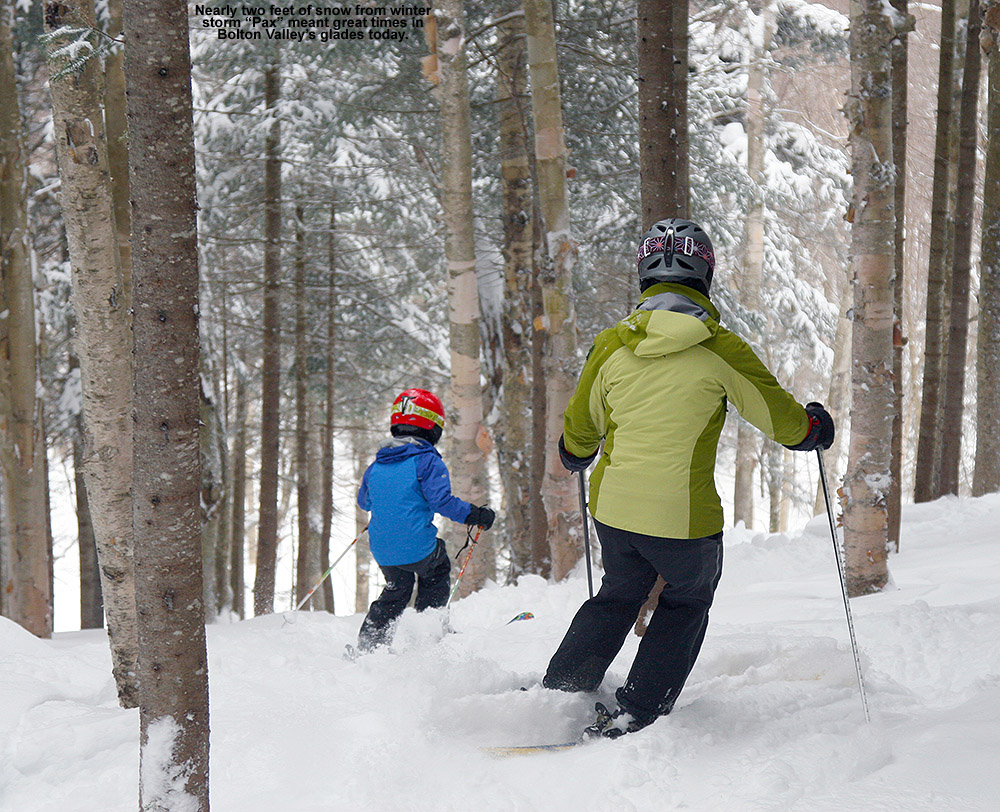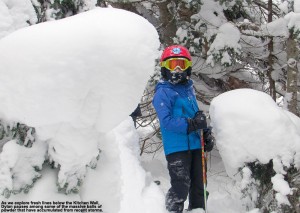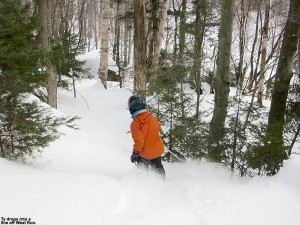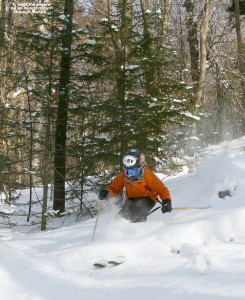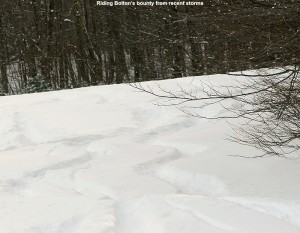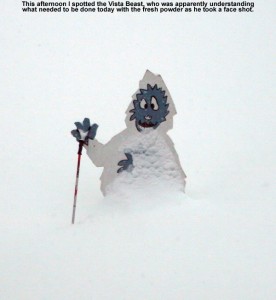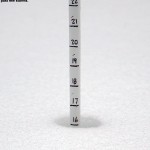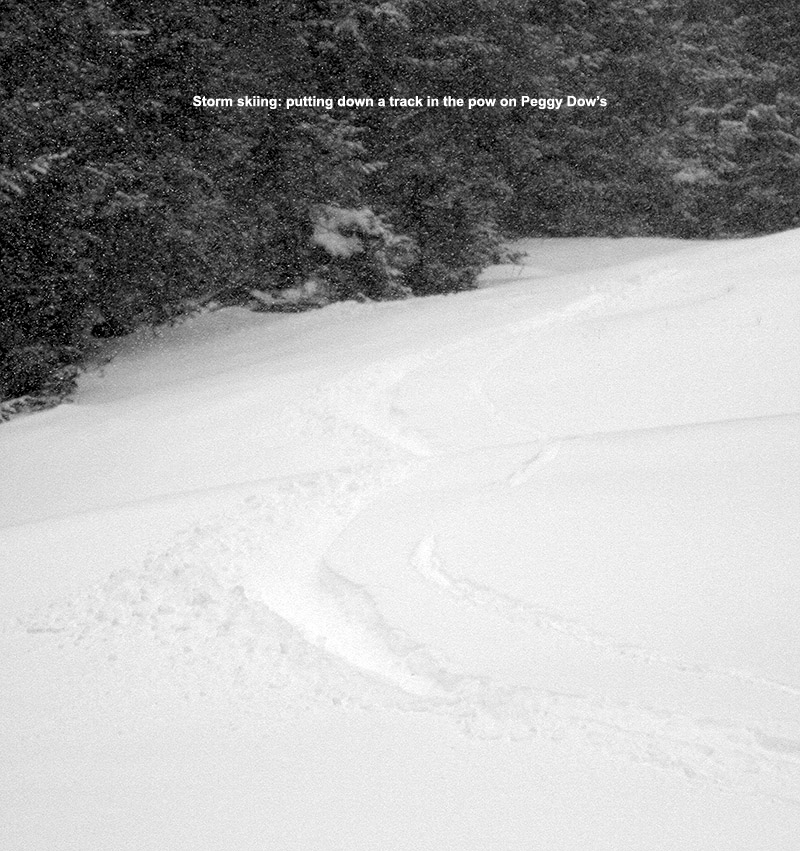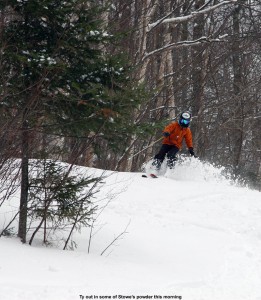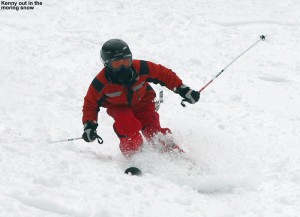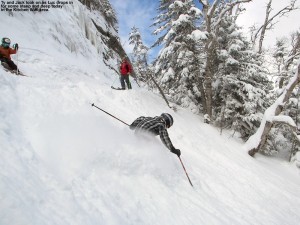
One of the early signs that Stowe has received a decent shot of overnight snow, is when Powderfreak sends out a pre-sunrise update and you see some nice depth to the snowy tire tracks in the parking lot. That’s the way it went this morning, and since a few inches down low can mean even more up high. It definitely piqued my interest, and suggested that we should go for one of those morning starts ahead of our afternoon ski program. With Dylan still under the weather, and E staying home with him, it would be just Ty and I heading out today. I waited until Ty woke up, he grabbed a quick bite, and we were off.
“Depth checks revealed powder close to two feet on north and other protected aspects, and while that crusty layer from a couple of weeks ago was presumably in there, it’s so deeply buried now that you’d never know.”

The lifts hadn’t been running too long at Spruce Peak when we arrived, and you could tell by the tracks that were appearing that there was some great fresh snow. We suited up in Spruce Camp, and then hopped on Sunny Spruce for a quick first run. When we saw that Freddie’s Chute was open, we headed right there and caught some of the fresh lines still available along the skier’s right. The snow that fell overnight was some gorgeous light and dry Champlain Powder™. There were several inches of new snow, and it skied really well, even if it didn’t have the density to keep you off the subsurface in previously tracked areas. We grabbed first tracks on some lines we knew in the Lower Smugglers Trees, and found the turns to be mostly bottomless there. We finished off with a run through the terrain above Meadows – there wasn’t quite enough powder to be bottomless down at those low elevations on south facing terrain, but the snow provided a good amount of resistance to make the turns fun.
“It was just me
and Ty, and a
couple hundred
acres of fluff.”
It was off to Mansfield next for some Gondola runs. We started with a run in which I introduced Ty to a full trip through the Hazelton Zone. With the snowpack at the Mt. Mansfield Stake above 60” now, there are no concerns about coverage. We just let our noses guide us through the terrain, and it was powder-filled adventure through streambeds, powder fields and steep river banks. We didn’t see another soul, and we didn’t even run into any tracks until we got down toward the main line in the bottom half of the area. It was just me and Ty, and a couple hundred acres of fluff. Depth checks revealed powder close to two feet on north and other protected aspects, and while that crusty layer from a couple of weeks ago was presumably in there, it’s so deeply buried now that you’d never know. South facing chutes were where that crust was evident though – there featured conditions with more like six inches of powder with a crusty base underneath. Once we found that out though, we stuck to the north facing terrain and other aspects where there were no problems. Ty said he loved the explorations and skiing in the area, along with the roller coaster exit traverse at the end. One comment he made was that the run seemed sort of long, which I’d argue is a nice problem to have. Our next run was through the Tombo Woods followed by some of the Switchback Trees, where the snow was great all the way to the bottom. When I did a depth check around the 2,000’-2,500’ mark on Switchback, I got a reading of 6 inches for the new snow. Ty noticed that his fat skis were serving him well, keeping him planing atop the snow and moving even when the terrain flattened out.
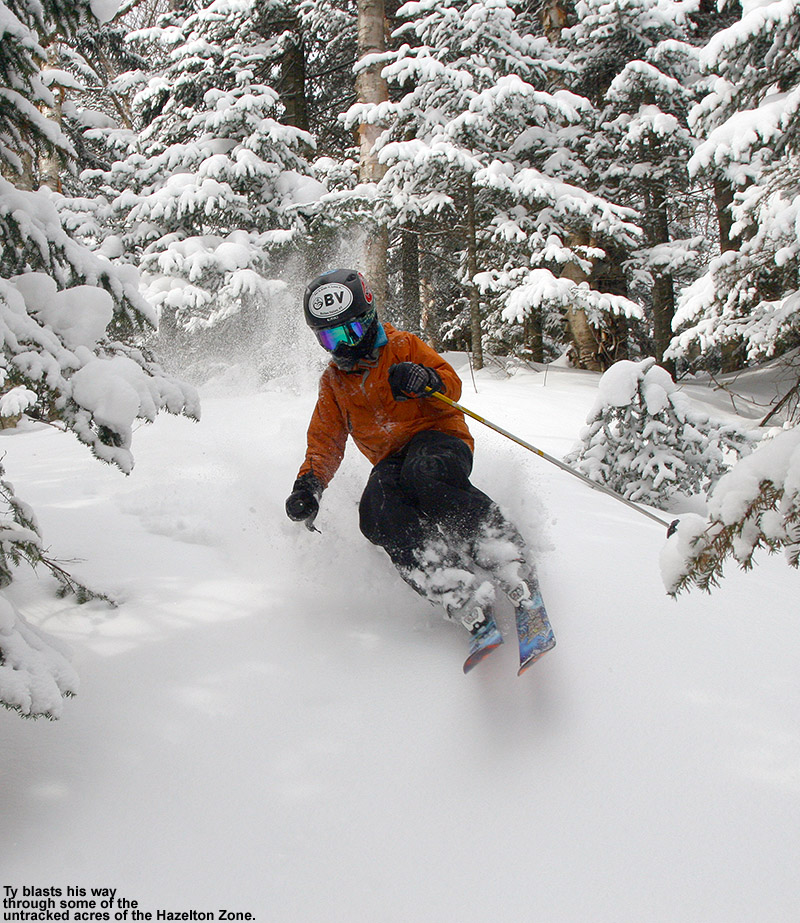
Ty and I headed in for lunch at the Great Room Grill, getting sandwiches from the deli area, and then met up with Luc and Jack for our afternoon session. We started them off with the run that Ty and I had skied in the morning, and Ty like the fact that he’d had both first and third tracks through the Lower Smugglers Trees for the day. Back over on Mansfield, we took a great run through the Kitchen Wall area, and worked our way all the way through the Goatdive Woods and some of the Liftline Trees. Jack hurt his leg a bit on a run through the Sunrise trees, so we made our way back to Spruce, where he took it easy for the last hour in the lodge while the rest of the group finished off with some runs on Sensation. Main Street was an interesting mix of hard manmade racing snow below the fresh stuff, but outside the racing fences was some really good powder. We’ll definitely be back to check out some of the new routes we learned there. This was definitely one of those sleeper Stowe powder days that sneak in under the radar – we were psyched to have it on a Sunday.










